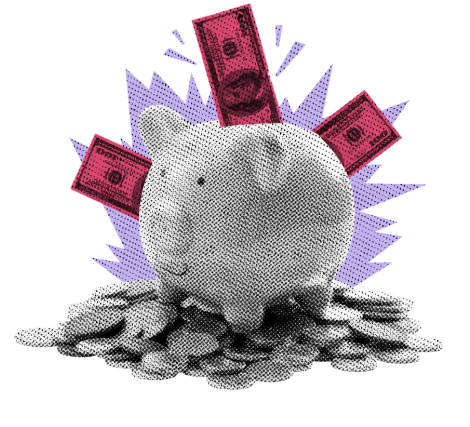Delay, Deny, Depose: The Economics of Healthcare and Its Ripple Effects

Healthcare costs are climbing, and profits are flowing upstream. See how the system works—and why it hits your wallet.
Life’s big mysteries. The tragic news of United Healthcare’s CEO has opened a lot of discussion about the very nasty subject of healthcare costs and quality of service. Investigators reported that the gunman’s bullet shell casings were inscribed with the words “delay,” “deny,” and “depose.” If that alone doesn’t evoke a visceral response in most of us, I would be shocked. I went down a rabbit hole this morning trying to get to the bottom of this very current topic. Pay attention now. Let’s start at the top.
Inflation is a very present issue for the economy, the markets, your portfolio, and your pocketbook. Ya think? We all know by now that sticky inflation has largely been attributed to services inflation with lots of focus on housing inflation like rent and some weird rent calculation that is supposed to factor in house prices. The problem with that type of inflation is that the Fed can’t really beat it with tight monetary policy. Do you know what other services inflation consistently runs hot, well above the 2% guideline? HEALTHCARE! Now, I know that you are not surprised because I know that you experience it in real life, just like me. You know how much money your insurance premiums are, and you also know how much less coverage you seem to get each year.
I have to tell you that, initially, I was reticent to look into this given the gruesome circumstances, but I just needed some answers… so I did it. I looked at United Healthcare’s financial statements and wanted to see if the healthcare insurance provider was somehow taking advantage of the insured by increasing their profits at our expense. Check out the chart.

As you can see by this chart, UNH has certainly grown its revenues over the past 10 years (rust-colored line). You can also see that the company has maintained a growth trajectory in net income (blue-colored line) similar to its revenues, possibly even exceeding it a bit. While this is no smoking gun, it shows that the company is certainly covering its expenses and not necessarily doing you or I any favors. I would give them a checkmark, because, after all, the objective of the firm is to generate profits, and there is no egregious expansion here. UNH is simply covering its growing costs by charging us higher premiums, and where they can’t they cut costs by limiting services. It’s no fun being the ones paying for all that, but we can’t argue with the business strategy. So, that begs the question, why are UNH’s expenses growing so fast?
If we look at UNH’s largest cost of revenue we note that Cardinal Health represents 13.07% of its cost of goods sold (COGS). Cardinal Health is a supplier of healthcare products and pharmaceuticals. AHA, are we onto something? Pharmaceuticals. Cardinal’s top suppliers include AbbVie, Johnson & Johnson, Bristol-Myers Squib, Eli Lilly, Gilead, and Pfizer amongst many others. You know all these companies 😉. Ok, so Cardinal buys drugs and products from these companies and distributes them to pharmacies where we purchase them and UNH covers a portion of the costs. So, is Cardinal somehow taking advantage of this situation? Let’s go to the chart. Check it out.

I had to plot this one by hand, but you can see how Cardinal’s profit margins over the past 10 years have been slim and declining. So, it is clear that Cardinal is not taking advantage of UNH in any significant manner. Going back to Cardinal’s pharma-company suppliers, let’s have a look at its biggest cost AbbVie. Let’s get right to the chart.

Another hand-made one 👷🔨. On this chart we can see that profit margins are sort of consistent over the past 10 years, but did you notice the actual margin percentages on the left-hand y-axis? That’s right, good years exceed 20% and bad years are around 10%. I would say that is… um, healthy 🤣 (Dad joke). Before we wrap it up, lets have a look at AbbVie’s business. The company's two top revenue producing medications are Humira and Skyrizi. Humira is used for Rheumatoid and Psoriatic Arthritis, and Syrizi is used for Plaque Psoriasis. Oh, and they also sold almost $3 billion worth cosmetic Botox in the past fiscal year 💉💉😃. I am not sure exactly how to link those indications all the way back, but it is clear that AbbVie knows how to make profits.
So, let's summarize. AbbVie and its competitor pharma companies, highly profitable, sell their products to Cardinal, a distributor, who is mildly profitable, which gets paid by United Healthcare, which gets paid by – YOU AND ME, in premiums. In order to maintain its margin, UNH either has to charge us higher premiums, provide lower quality of service, or, when that fails, delay, deny, and depose. UNH’s average profit margin over the past 10 years has been around 5%. And finally, it is important to note that Fed monetary policy has little impact on healthcare costs which are highly inelastic… meaning there is no cheap substitute for health other than unhealth (which is surprisingly, a real word).
YESTERDAY’S MARKETS
Bulls rested their hooves yesterday leaving stocks in the red as traders contemplated this morning’s big numbers. Weekly, first-time unemployment claims nudged above their 4-week moving average exceeding analyst expectations leaving spreadsheet jockeys wondering if monthly employment numbers will deteriorate as a result.

NEXT UP
- Change in Nonfarm Payrolls (November) came nearly on expectations at 220 after last month's revised 36k additions.
- Unemployment Rate (November) ticked up to 4.2% from 4.1%, but analyst consensus was 4.1%. This is a slightly negative print for employment which will be viewed as supporting the Fed’s case for a rate cut later this month.
- University of Michigan Sentiment (December) may have risen to 73.2 from 71.8.
- Fed Speakers: Bowman, Goolsbee, Hammack, and Daly.
- Next week: Consumer Price Index / CPI and Producer Price Index PPI. Check in on Monday for calendars and details.
.png)

